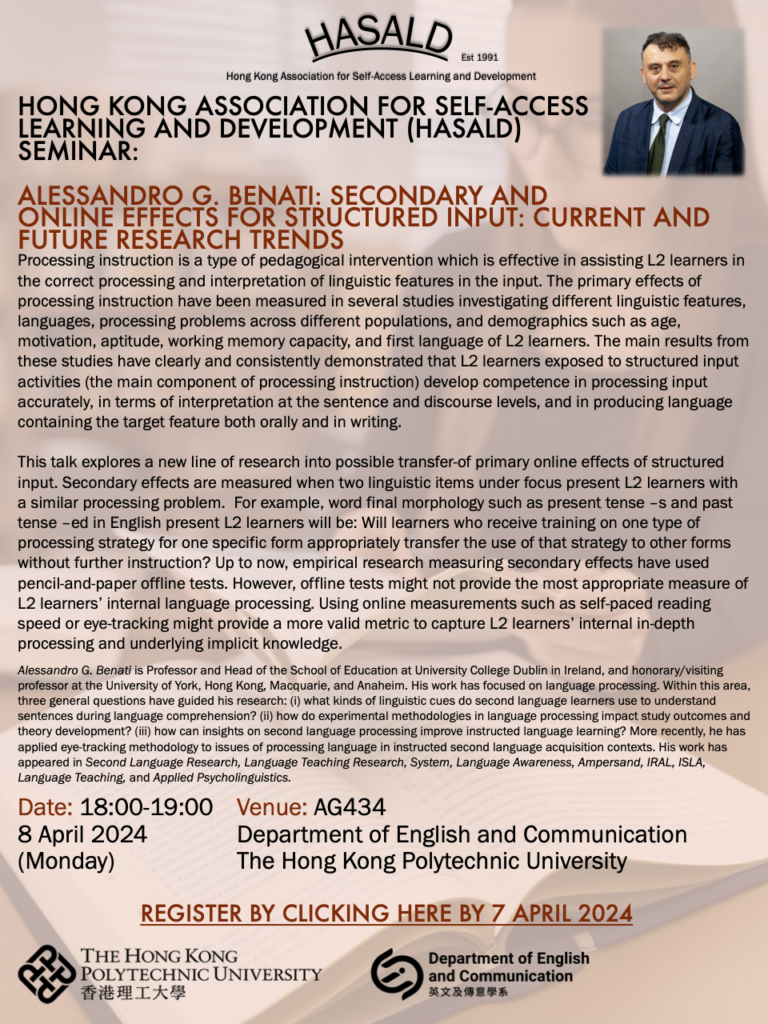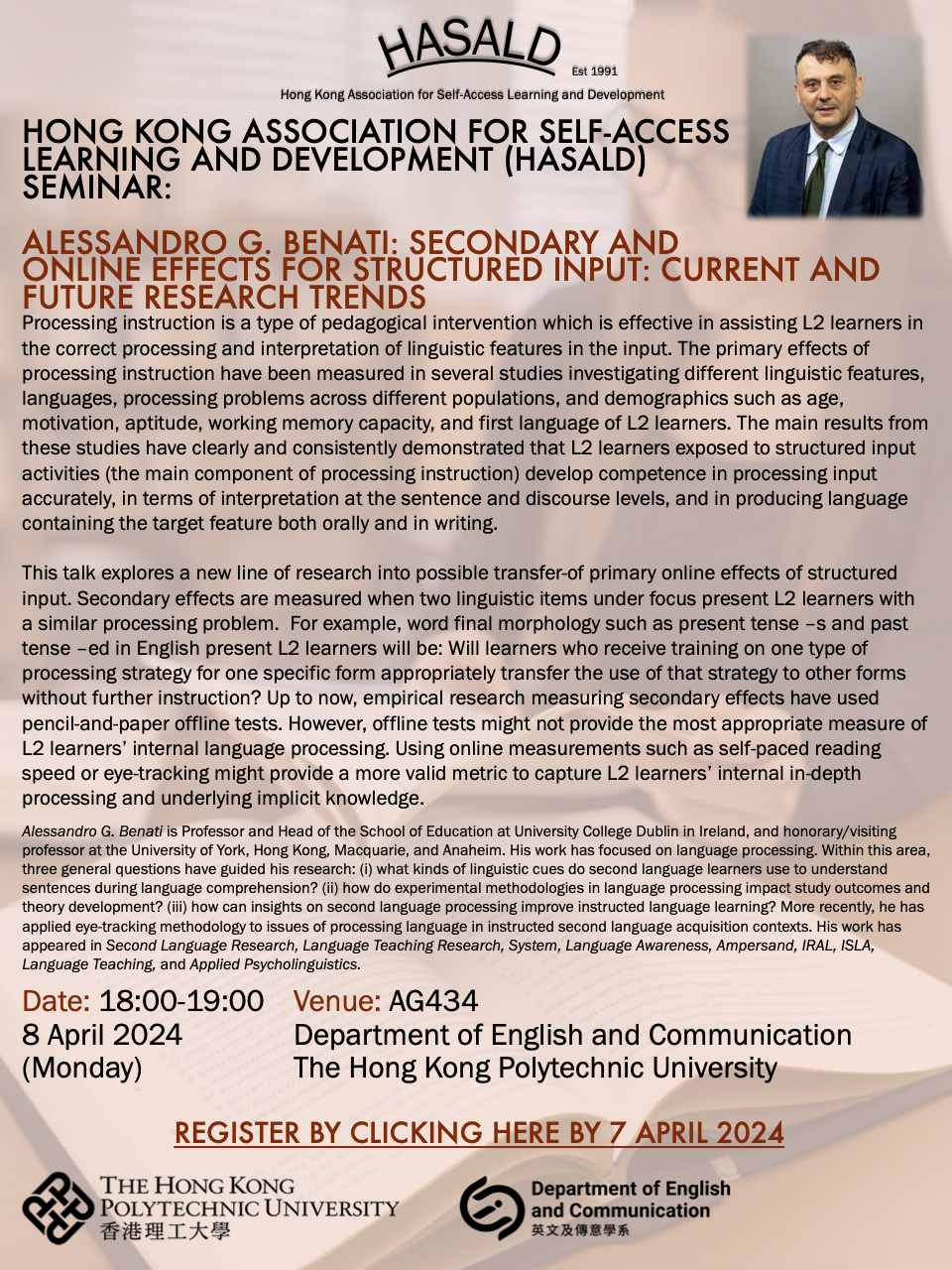Secondary and online effects for structured input: Current and future research trends
By Professor Alessandro G. Benati
Processing instruction is a type of pedagogical intervention which is effective in assisting L2 learners in the correct processing and interpretation of linguistic features in the input. The primary effects of processing instruction have been measured in several studies investigating different linguistic features, languages, processing problems across different populations, and demographics such as age, motivation, aptitude, working memory capacity, and first language of L2 learners. The main results from these studies have clearly and consistently demonstrated that L2 learners exposed to structured input activities (the main component of processing instruction) develop competence in processing input accurately, in terms of interpretation at the sentence and discourse levels, and in producing language containing the target feature both orally and in writing.
This talk explores a new line of research into possible transfer-of primary online effects of structured input. Secondary effects are measured when two linguistic items under focus present L2 learners with a similar processing problem. For example, word final morphology such as present tense –s and past tense –ed in English present L2 learners will be: Will learners who receive training on one type of processing strategy for one specific form appropriately transfer the use of that strategy to other forms without further instruction? Up to now, empirical research measuring secondary effects have used pencil-and-paper offline tests. However, offline tests might not provide the most appropriate measure of L2 learners’ internal language processing. Using online measurements such as self-paced reading speed or eye-tracking might provide a more valid metric to capture L2 learners’ internal in-depth processing and underlying implicit knowledge.
About the speaker
Alessandro G. Benati is Professor and Head of the School of Education at University College Dublin in Ireland, and honorary/visiting professor at the University of York, Hong Kong, Macquarie, and Anaheim. His work has focused on language processing. Within this area, three general questions have guided his research: (i) what kinds of linguistic cues do second language learners use to understand sentences during language comprehension? (ii) how do experimental methodologies in language processing impact study outcomes and theory development? (iii) how can insights on second language processing improve instructed language learning? More recently, he has applied eye-tracking methodology to issues of processing language in instructed second language acquisition contexts. His work has appeared in Second Language Research, Language Teaching Research, System, Language Awareness, Ampersand, IRAL, ISLA, Language Teaching, Applied Psycholinguistics.

